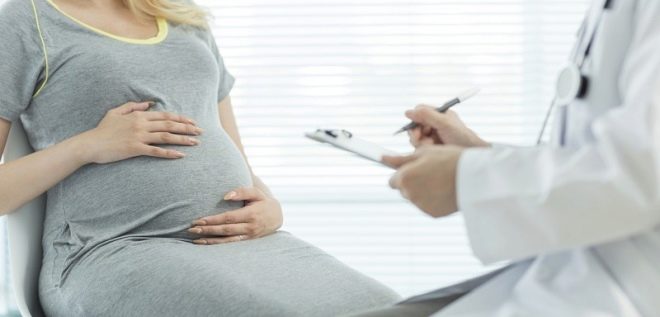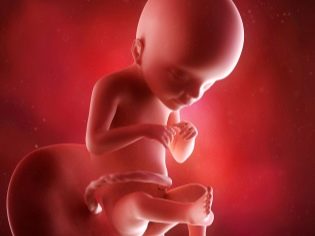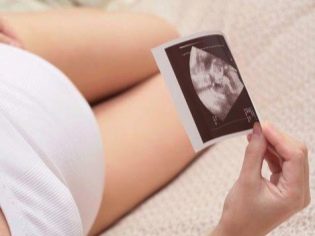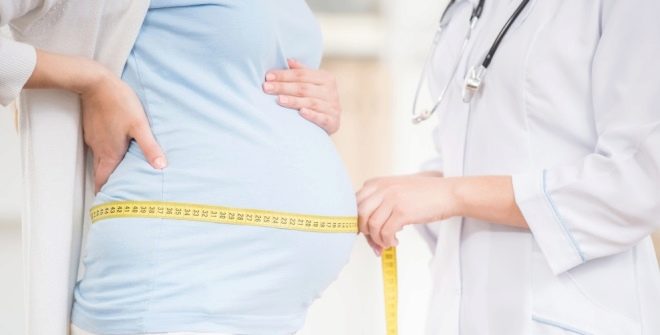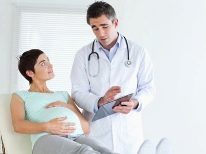What periods of pregnancy are considered the most dangerous and how to reduce the risks to a minimum?
A pregnant woman during all nine calendar (10 obstetric) months should observe special precautions - after all, from the moment of the appearance of two strips on the test and until the first cry of the baby in the labor hall, she is fully responsible for everything that happens to the baby. Careless actions can lead to sad consequences. However, during pregnancy emit the most dangerous periods when the likelihood of various threats increases. What are the terms and how to minimize the risks, we will tell in this article.
What is the danger?
Experienced gynecologists and obstetricians have long noticed that over the entire period of gestation in a woman, even if her pregnancy is uneventful, there are periods of increased danger. With the coincidence of complications and dangerous periods of pregnancy may be interrupted.
Most often, in the first trimester, a woman is threatened with a spontaneous miscarriage, as well as missed abortion, in which the fetus dies, stops developing, but continues to remain in the uterus for some time. In the second trimester, there are certain weeks in which the likelihood of seizures and gestosis increases. The second half of pregnancy has its alarming "boundaries", at the intersection of which increases the likelihood of premature birth.
Critical periods are not a folk myth or fiction, but a reality that you need to know in advance in order to be careful and not to put the baby’s life and health at risk.
Let's look at each of these periods.
First trimester
The first trimester ends 13 weeks of pregnancy, inclusive. This period is without exaggeration the most important stage. From several cells an embryo grows, which gradually turns into a fetus. It is during these three months in the child that all organs and systems are laid, limbs, brain, blood circulation, and genitals are formed. Any negative effects in the first trimester (for example, uncontrolled medication, SARS or other viral infections, high fever, etc.) can lead to irreversible consequences - from developmental pathologies of the child to his death and rejection.
A little later, in the second trimester, the baby from toxins, drugs taken by the mother, will protect the placenta - this is the best natural barrier, but while the placenta is still being formed and not functioning, it means that the child is completely vulnerable to numerous threats from the outside.
By itself, the first trimester is one big dangerous term. But in it, however, experts distinguish the three most dangerous periods. The very first is the implantation of a fertilized egg into the functional layer of the uterine endometrium. This happens about a week after ovulation, which corresponds to 2-3 obstetric weeks of pregnancy.
The main risk factor for this period is the lack of implantation or the rejection of the ovum within a few days after he still managed to attach to the wall of the uterus. In most cases, this happens unnoticed by a woman.Just in time or with a slight delay, the next periods come, and the woman does not realize that the pregnancy was.
Implantation can fail due to a variety of reasons, including exposure to toxic substances (smoking, alcohol, drugs), stress and emotional shocks, hormonal disorders in a woman’s body, congenital fetal abnormalities that are incompatible with life (natural selection), high levels of physical loads, which at this moment the woman is experiencing, as well as the presence of changes in the endometrium of the uterus (endometriosis, scars on the uterus after operations).
Quite often, implantation of a fertilized egg causes difficulties for women who suffer from uterine fibroids, have congenital or acquired anatomical anomalies of the uterus, as well as women who underwent several abortions, because each curettage makes the endometrium thinning.
The second dangerous period in the first trimester is 4-6 weeks of pregnancy. At this time, the delay begins, the tests are already “rummaging”, but this is if they expect pregnancy. If a woman does not suspect her “interesting position”, then she is waiting for her period during this period and does not always ensure that the same nicotine or alcohol, as well as a couple of headache pills do not enter the body. At this time, the embryo's primordia are laid. The risks of pathologies and abnormalities are highest.
The third critical period of the first trimester is 8-11 weeks of gestation. During this period, intensive formation of the placenta. There may be sudden "jumps" of hormonal levels that can lead to miscarriage. Also, this period is considered one of the most dangerous in terms of the likelihood of a fading fetal development in the womb.
Second trimester
The middle of pregnancy is deservedly considered a calmer period. It is less than dangers, the state of health of future mummy is better. The baby begins to move, but as long as its size is small and these movements do not cause discomfort to the woman, rather, they delight and surprise her. In this period, the baby begins to grow actively, all the internal organs of the baby are already formed.
The placenta now not only nourishes the child and provides it with oxygen, but also protects it from unwanted substances, which it delays according to the principle of the living barrier.
In the second trimester there is one dangerous period during which a woman should be careful and cautious. It starts from 18 and ends with 21 weeks of pregnancy (inclusive). It is at this time that the so-called “late miscarriage”, the discharge of waters, can occur. The risk of missed abortion is usually limited to 21-22 weeks. Undeveloped pregnancy after this obstetric week is a rarity.
The reasons that can lead to miscarriage at such a late period (this phenomenon occurs in 1-2% of cases) are most often associated with the development of isthmic-cervical insufficiency, as a result of which the cervix is too weak to keep the growing fetus further. Inner throat opens, miscarriage occurs. Also, the reason often lies in the wrong arrangement of the “children's place” (presentation, detachment) or in genital infections, which women could become ill after the onset of pregnancy.
Third trimester
The main danger of the third trimester of pregnancy is the possibility of the onset of preterm labor, because it’s not a fact that the baby will be ready to enter our world - it may not complete the maturation of the lung tissue, be low in weight. These are the two main causes of neonatal mortality in premature babies.
The most dangerous in the last third of the gestation period is the period from 28 to 32 weeks. At this time, preterm labor will not necessarily end safely for the life and health of the baby.At this time, preeclampsia (late toxicosis), premature aging or detachment of the “children’s place”, as well as cervical insufficiency, which was diagnosed earlier, can provoke childbirth.
Hormonal abnormalities in the body of the future mother, strong stress, excessive weight gain - all of these are risk factors.
How to avoid complications?
In the first trimester, a woman should be especially attentive to her well-being. You should say goodbye to cigarettes and alcohol at the first signs of the second strip on the test, or better, at the planning stage of pregnancy six months before conception. Any medication during this period will not benefit the baby. The exceptions are the hormones prescribed by the doctor, vitamins, folic acid.
Women should refrain from contact with household chemicals, varnishes and paints, acetone, gasoline, nitrates and heavy metal salts. If her work is related to activities in hazardous work, a certificate should be provided from the women's counseling center at the place of work — by law, women will be transferred to less hazardous jobs.
A pregnant woman should get enough sleep, eat normally. Sex is not contraindicated if there is no threat of miscarriage. On the plane you can fly, but carefully, again in the absence of the threat of abortion. In the first trimester, you need to take care of early registration, pass all tests and pass examinations. If any pain, unusual discharge from the genital organs, should immediately consult a doctor.
In the second trimester, the recommendations are the same, but a woman may be allowed certain medications, because the placenta is already fulfilling its barrier function. It is important to visit the doctor according to the schedule, do not miss the visit to the consultation. Identify problems and minimize them with problems with the cervix, with the threat of late miscarriage, help timely diagnosis. In 95% of cases of threatened pregnancy, it is possible to save a pregnancy if a woman visits a doctor in a timely manner and does not sit at home in expectation that “everything will pass by itself”.
In the third trimester, it is important to monitor the weight, mark fetal movements and prevent the development of preeclampsia. A woman should be prepared to be hospitalized at any time during the dangerous period of the third trimester in order to carry out her therapy. Some of the future mothers at risk are hospitalized "just in case" so that they can survive the "crisis period" under the supervision of doctors. The risk group includes women after IVF, with isthmic-cervical insufficiency, preeclampsia, multiple pregnancies, severe water deficiency or high hydration.
If any atypical pain, abnormal discharge occurs, you should immediately contact a doctor. Better to be safe than overlooked. From week 32 it is better to avoid traveling by air, to rest more, not to burden yourself with homework.
Individual hazards
There are also individual dangerous periods that are quite difficult to explain in the dry language of medical science, but every doctor knows about their existence. If a woman’s previous pregnancy ended in miscarriage or fetal frostiness, for example, at the 16th week of pregnancy, then 16th week of the subsequent pregnancy will be the most dangerous for a particular woman. Quite often, a negative scenario is repeated to the nearest week. Therefore, when registering, be sure to remember in as much detail as possible at what dates and how your previous pregnancies ended. This information will help the doctor plan how to protect you and your baby in your own “critical time”.
Women who have not been able to get pregnant for a long time are usually harder to wear a pregnancy - practice shows that in 20% of cases after a long-awaited conception a miscarriage occurs at an early period. In 15–20% of cases, it is not possible to bring the pregnancy to childbirth and to women who have been reprimanded by fertility specialists during the IVF protocol.
The higher the age of the future mother, the more likely that dangerous periods of pregnancy will be harder, with complications. Strangely enough, not only “age-related” pregnant women, but also too young future mothers, who are barely 18–19 years old, are at risk by age.
In the next video you will hear important information about critical periods of fetal development.

